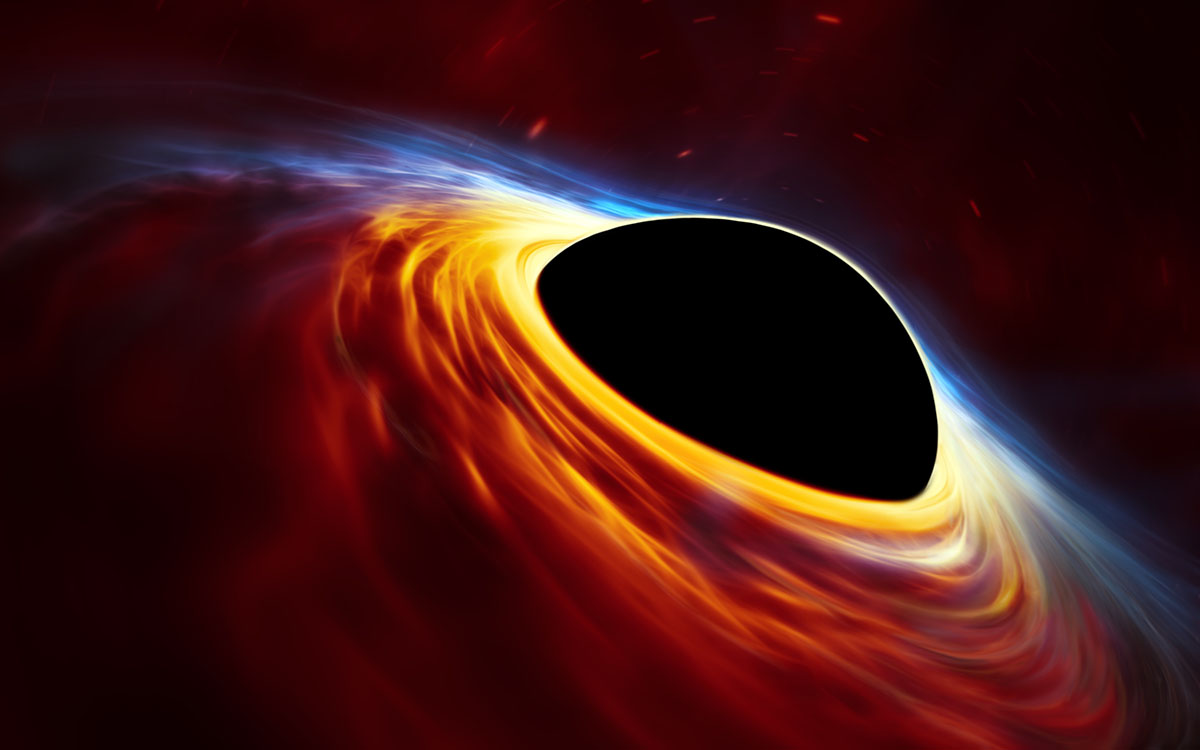sizing up a supermassive titan

Some 50 million light years away, at the center of the M87 galaxy lies the most massive black hole detected in a mature galaxy so far. New estimates place it at about 6.4 billion solar masses, two to three times more than previously thought. And while astronomers will use new and more accurate measurement techniques to get a better grip on galaxy formation, what catches my attention here is the monstrous heft of this titanic object and the question of how to put all those billions of solar masses into some sort of astronomical perspective.
Imagine that you have a scale which can support any mass you put on it. Now, let’s do a little math. Our Sun is just over 864,000 miles across. If we compress it into a cube of the same mass and density as it is now, we would get a structure that stretches 2.7 times the distance between the Earth and the Moon, or 649,530 miles. So far so good. Now we have to stack another 6,399,999,999 cubes just like this to on top of the first one. By the time we’re done, the end of our tower would be just a few light years short of the star Canopus, about 693 light years towards the constellation Carina.
How does an object get that massive? According to a paper by a group of astronomers and astrophysicists, one potential explanation for the formation of these objects are highly compressed clouds of gas in an infant galaxy rapidly collapsing from the effects of radioactive decay. The newly formed black hole would then begin increasing its mass the same way we increase ours. It gorges itself. After growing large enough to develop a quasar around itself, it could keep growing as long as there are dust, gas and stars within reach. Eventually, the messy and energetic process of devouring immense amounts of matter would push its food out of reach and the supermassive black hole would go quiet, only grabbing a quick snack when something gets caught a bit too close and gets pulled into the event horizon.
Begelman, M., et. al. (2006). Formation of supermassive black holes by direct collapse in pre-galactic haloes Monthly Notices of the Royal Astronomical Society DOI: 10.1111/j.1365–2966.2006.10467.x





